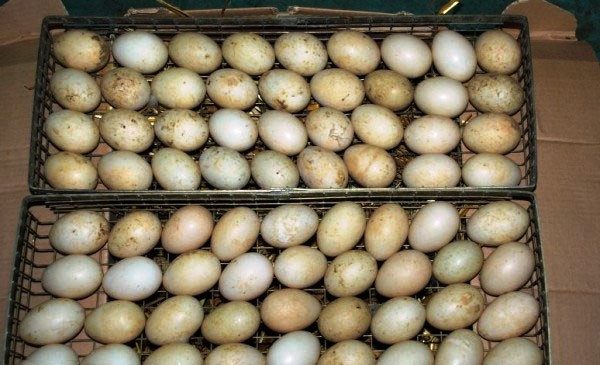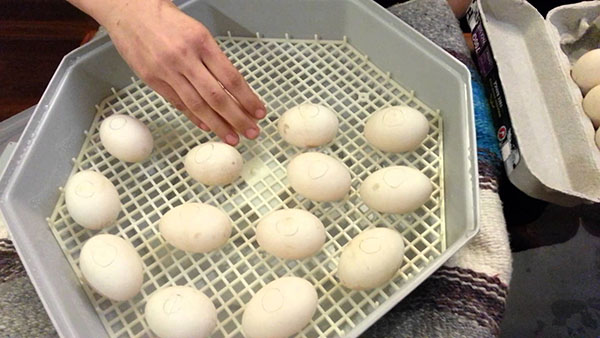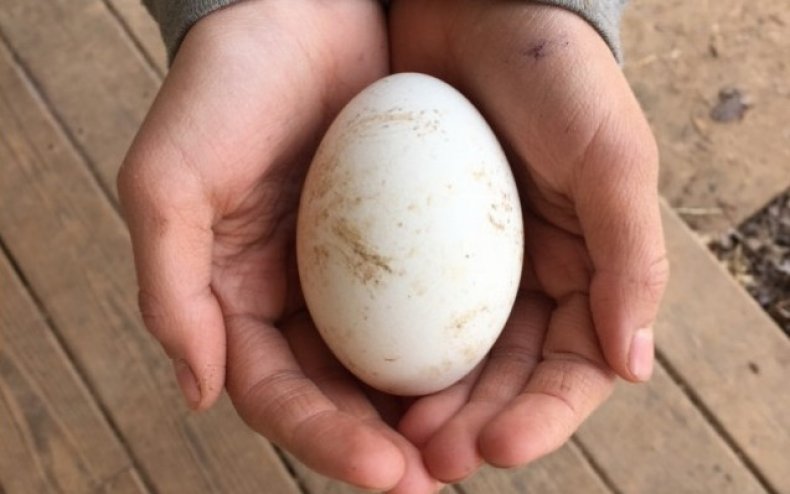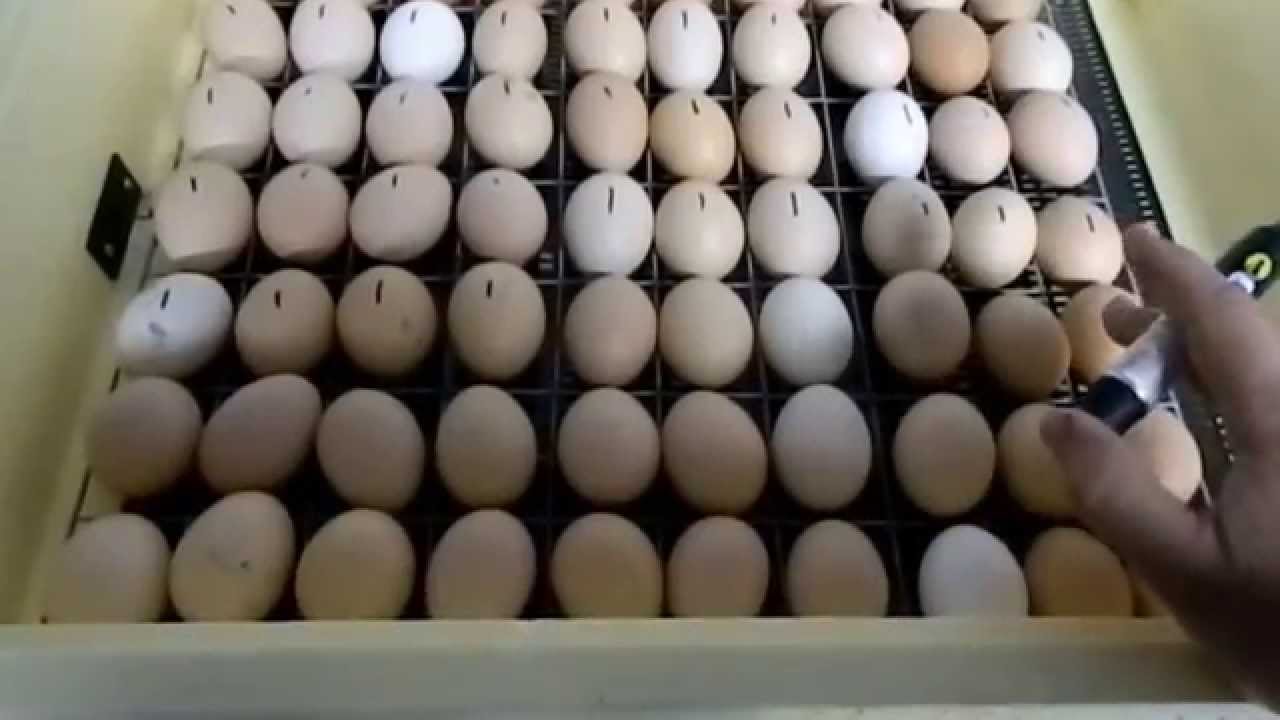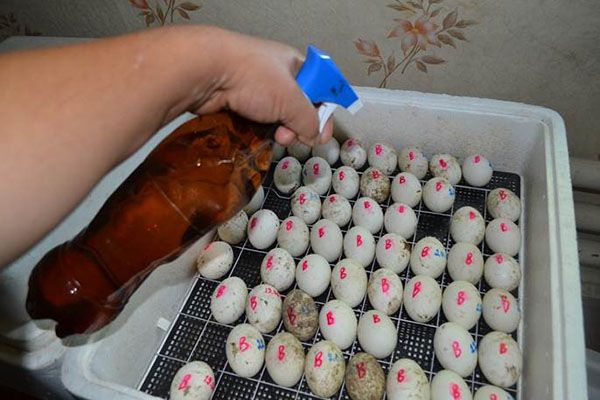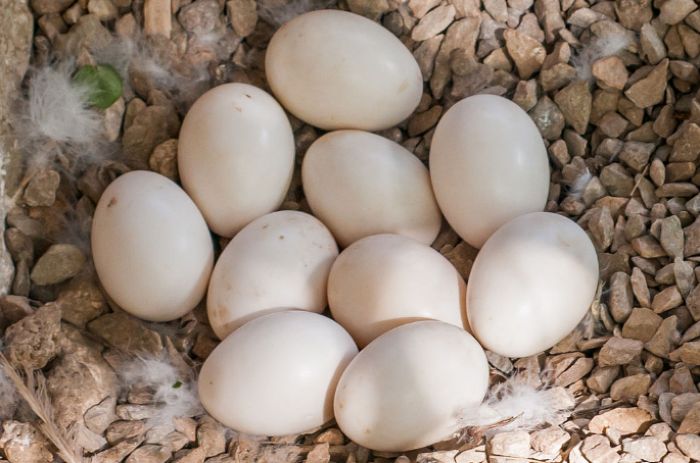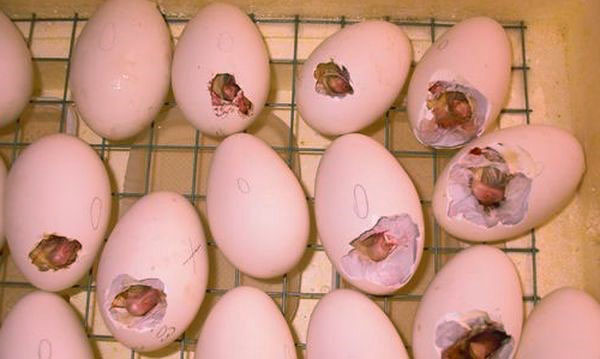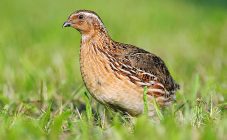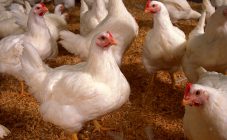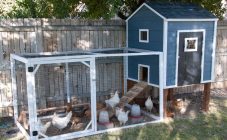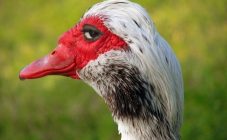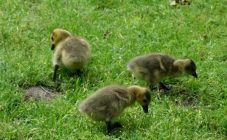Content:
Quite often, on farms and in households, birds are bred using an incubator. This helps to deal with the problem when the duck is unwilling to hatch eggs. Also, an incubator is a real find for large farms, in which the main task is to breed a large number of ducklings. Incubating duck eggs is a painstaking but very interesting and profitable activity.
Duck eggs in an incubator: incubation temperature and hatching of ducklings
Is it difficult to breed chicks on their own, novice poultry farmers are often interested in. Breeding ducklings in an incubator at home is possible if everything is done correctly. Duck eggs in the hatchery should be laid out with the pointed ends down. It is important to keep the slope slightly. If the goal is to breed duck ducks, the eggs should be placed horizontally in the trays to ensure rapid embryo development and a high percentage of hatched ducks.
In incubators, the manufacturers of which have provided for the turning of the trays, eggs should be especially carefully fixed in containers. The temperature regime gradually changes during the incubation period. The humidity level also increases. This is necessary due to the ability of the embryo in the egg to give off heat to the atmosphere.
The less time is left for hatching, the greater the percentage of evaporation of moisture that penetrates through the pores of the shell to the outside. If the process is left unchecked, it will lead to the death of the embryos.
Recommended temperature regime that should be observed when hatching birds:
- 1-14 days - 38.5-38.0 ° C;
- 14-21 days - 38.0-37.5 ° C;
- 21-26 days - 37.5-37 ° C.
It is very important to systematically turn the eggs if this is not done automatically by the incubator.
Eggs should be turned 4-12 times in 24 hours (depending on the design of the incubator). To control the state of the eggs, they are shone through for 8, 13, 25 days. If eggs are found that do not show signs of development or symptoms of spoilage occur, they must be removed from the incubator.
As soon as the first signs of a duck egg beating appear, transfer it to the hatcher tray and lay it horizontally. The first ducklings begin to appear on the 26-27th day. The hatching process ends on day 28.
As soon as hatching begins, care should be taken to ensure that the incubator maintains temperature conditions and provides good ventilation. After the appearance of the ducklings, they are transferred to a dry ventilated room, the air temperature in which should be in the range of 20-23 ° C. Ducklings can dry here. Once the hatching process is complete, the birds are sorted.
The daily duckling can already stand perfectly on its legs. He is mobile, he has a great appetite. The baby's body is covered with an even layer of quality fluff. When examining young animals, it is necessary to pay attention to the eyes and beak, they must be clean. The umbilical cord should have fallen off and healed by this time, and the belly should become dense and not hanging.
Incubation of duck eggs at home: rules and features
How to choose the right eggs to hatch ducklings in an incubator? Eggs differ in:
- volume;
- the appearance of the shell.
Duck eggs are distinguished by their large size, porous and thick green shells. Before sending eggs to the incubator, you need to examine and select them according to the principle:
- Egg mass should be within 75-96 g.
- The shape of the egg should not be elongated, round, with a smooth and thick shell.
- Defects on the shell, such as chips, deformation or cracks, are unacceptable.
- Eggs intended for incubation are stored for no more than 7 days. It is unacceptable to place them in refrigerators. The best storage place will be a plywood tray, the temperature in which should be between 12-13 ° C. It is imperative to maintain good ventilation and humidity within 70%.
It is unacceptable to lay eggs on top of each other, this will reduce the number of hatched ducklings. Until they enter the incubator, the eggs must be systematically turned over (4-6 times a day), which will increase the percentage of hatching of chicks.
Egg setting and temperature
Before laying, dirt is removed from the surface of the egg. When bookmarking, experts recommend following special recommendations:
- Having installed the incubator, you should warm it up to the set temperature.
- At the bottom of the incubator is a tray filled with water. It is very important to control further the fullness of this container.
- It is unacceptable to wash the incubator bookmark!
During incubation, large specimens are first placed in a horizontal position. After 3-4 hours, medium and small eggs are similar. The humidity level is measured using special thermometers; it is quite possible to make them with your own hands. Taking a regular thermometer, tie a piece of fabric on its lower tip. The remaining free tip is lowered into a tray filled with water. It is he who will become an indicator of the level of humidity.
To facilitate the process of hatching ducklings, it is best to purchase incubators with automatic egg turning. If the device does not have this function, turn the filling material every 4 hours daily.
To improve metabolic processes and accelerate the development of chicks, it is necessary to apply cooling. It should be soft and short. You just need to spray the eggs with water (the temperature should be about + 27 ° C). The procedure is carried out for about two minutes, then 8-10 minutes are allowed to dry.
The question of whether or not to wash a dirty egg before incubation is controversial. Some poultry farmers argue that this is absolutely not worth doing, because hatchability of chickens decreases; others say that nothing terrible is happening. It is up to each breeder to decide whether or not to wash the eggs before laying them.
How long does the incubation of duck eggs take
How many days do ducklings hatch? The incubation period is, as a rule, 26-28 days. If no chicks were hatched during this period, we can talk about violations that took place during laying or during incubation.
Table: Incubation mode for duck eggs
While the incubation of Peking and Muscovy ducks lasts, it is important to check the filling material by means of ovoscopy on days 10 and 21. During the first check, a dark germ spot in the central part should be clearly visible during transillumination. It is unacceptable for the embryo to float or have bloody rings. On day 21, the testicle should be dark. the air chamber must be clearly visible. If desired, you can place the egg on the back of your hand. If it is warm, this is evidence of correct incubation and early hatching of the chick.
Features of artificial incubation of Peking and musk bird eggs
With good ventilation and adherence to the recommended temperature, musky and Peking chicks begin to hatch at 28-33 days. A few days before hatching, you can clearly hear the first squeaks. After hatching the shell, the chick completely comes out of captivity in about 8-10 days. If, after 10 hours, the ducklings do not leave the shell, they need help: make a small hole on the blunt side of the egg (in the area of the air chamber). Thanks to this, the baby will be able to breathe independently.
If the shell under the shell is painted white or yellow, you can help the baby to get out into the light. If there are blood vessels under the shell, it is unacceptable to take out the chick, it is not yet ready to be born.
When the deadline for the exit is approaching, and the duckling has not yet nailed, you should carefully break off the pieces of the shell, which will facilitate the exit process.
The young that hatched with the help of a person should spend some time in the apparatus until they dry completely.
Once the young are dry, you can move them into a cardboard box in which to place dry bedding.
The first days babies do not independently regulate the temperature regime of their own body. During this period, it is important to avoid excessive cooling. Babies are fed with finely chopped eggs. After that, chopped greens, cottage cheese and wet mash are gradually introduced.
Table: Incubation mode for duck eggs
| Period | Stage | Temperature | Turn | Humidity | Cooling |
|---|---|---|---|---|---|
| 1-14 days | warming up, development | 38.5 | Yes | 55-60% | ovoscope |
| 14-21 days | formation | 37.5 | Yes | 40-50% | spraying, ovoscope |
| 22-34 days | formation, withdrawal | 37 | no | 0.6 | Ovoscoping, spraying |
Breeding ducklings in an incubator: the main mistakes and difficulties
Quite often, novice poultry farmers, due to inexperience, make a number of mistakes when breeding ducklings:
- Do not control heating and its uniformity. To avoid this mistake, it is necessary to stir the eggs. From the outermost part, the filling material is transferred to the center, and from the middle, the eggs are transferred along the edges.
- Overheating, leading to heatstroke in embryos. This often leads to the death of a chick that has not yet had time to be born.
Breeding chicks is a painstaking process, however, following the recommendations of experts, it will not cause any particular difficulties. When incubating duck eggs at home, temperature and humidity are critical. A joint incubation of birds of various breeds is possible, which will allow household farms to simultaneously breed ducks, turkeys and chickens with quails. Poultry farming is exciting every year more and more and can become not only a hobby, but also a good income.In the spring, summer residents actively buy young animals, and chicks bred with their own hands usually have a high survival rate, so it will be difficult to leave at a loss in this case. It is worth remembering that good egg turning in the hatchery ensures that the embryo disc and subsequently the embryo itself do not dry out on the shell. And the output rate will increase significantly.
